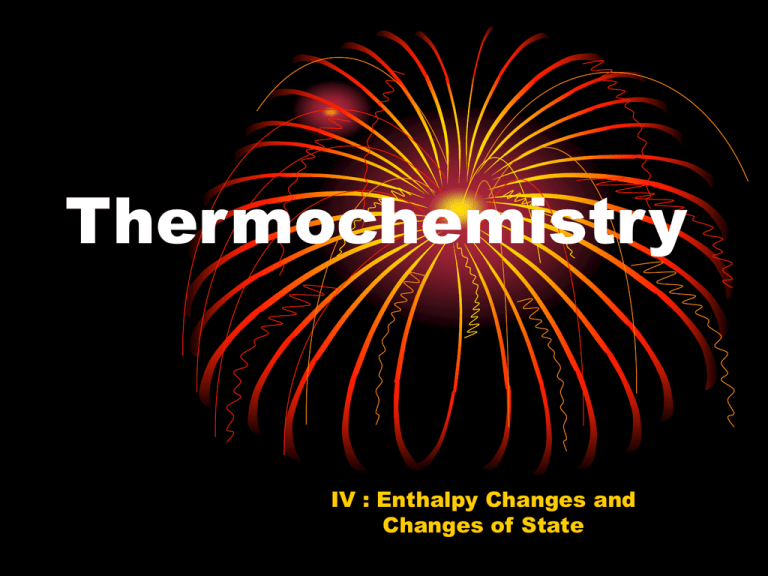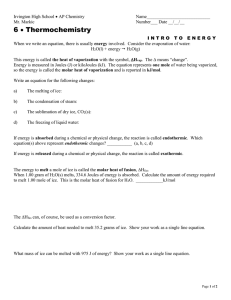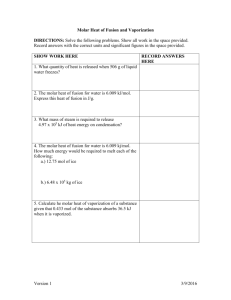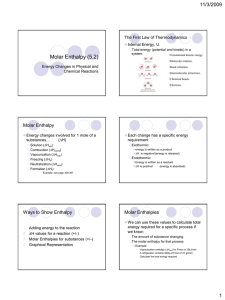Enthalpy and Changes of State
advertisement

Thermochemistry IV : Enthalpy Changes and Changes of State Review: • KE= energy of motion • PE= stored energy • T = measure of average KE of particles of system (or surroundings) Phase change: • A change in matter without any change in chemical composition of the system • Just like chem rxns changes of state involve P.E changes in the system *** Always involves energy changes, but not temperature changes. There is constant temperature during a phase change. Why? Because… • This is not a change in kinetic energy • But we know that energy is entering the system because the bonds that are holding the molecules together are being broken or altered. • This increases PE of the molecules • It requires 10-100 times more energy for a chemical reaction to take place than a phase change • Why? because a chemical reaction requires stronger ionic and covalent bonds to be broken, but a phase change only requires intermolecular bonds to be broken. Changes of State cont’d • In general, enthalpy changes btw liq and gas or greater then btw liq and solid • Why? Phase changes: (surroundings) (s) to (l) endo T endo T (l) to (g) Fusion (melting) vaporization (g) to (l) condensation exo T (l) to (s) exo T (g) to (s) Solidifying (freezing) sublimation exo T (s) to (g) sublimation endo T Molar Enthalpy for changes of state • Aka: Latent Heat of Phase Change • You can find tables of these values listed in data booklet as well as pg 647 • Unit: kJ/mol Opposites!! ∆Hvap = - ∆Hcond ∆Hmelt = - ∆Hfre • Freezing and condensing releases heat to surroundings • Vaporization and melting absorb heat from surroundings • Same units: kJ Definitions • Molar Heat of Fusion (melting) = energy that must be absorbed in order to convert one mole of solid to liquid at its melting point (ΔH melt ) • Molar Heat of Freezing (solidifying) = energy that must be removed in order to convert one mole of liquid to solid at its freezing point (- ΔH freez) Cont’d • Molar Heat of Vaporization = energy that must be absorbed in order to convert one mole of liquid to gas at its boiling point (ΔH vap ) • Molar Heat of Condensation = energy that must be removed in order to convert one mole of gas to liquid at its condensation point (- ΔH cond) Can be represented just like a chem rxn: H2O (s) + 6.02 kJ H2O (l) or H2O (s) H2O (l) ∆H = 6.02 kJ Example: • The molar heat of fusion of water is 6.009 kJ/mol. How much energy is needed to convert 60g of ice at 0 C to liquid water at 0 C? • 60g x 1 mol H2O = 3.3 mol H2O 18.02 g q = n ∙ ∆Hfus = (3.3 mol) (6.009 KJ) = 19.8 kJ HW: • Pg 648-649 # 24-26,28,29








